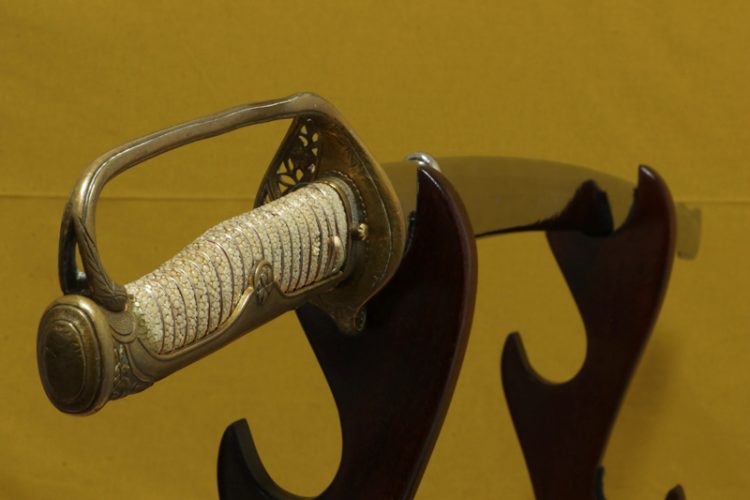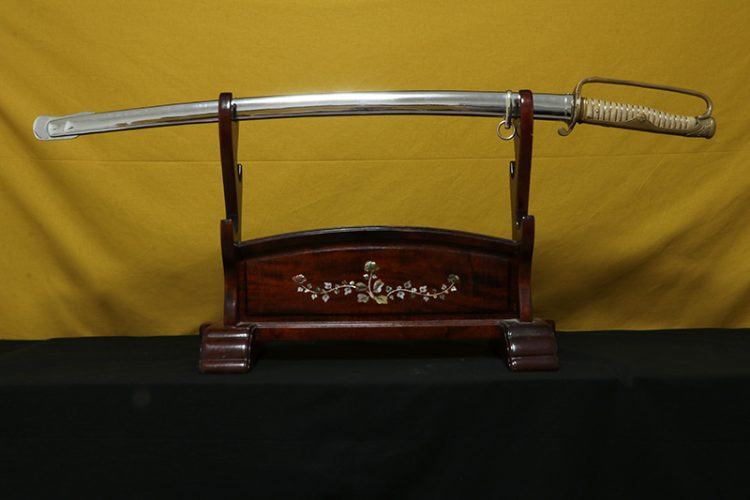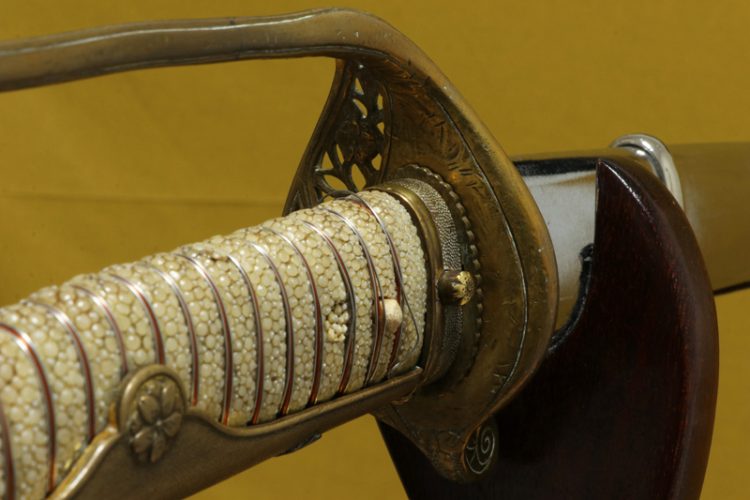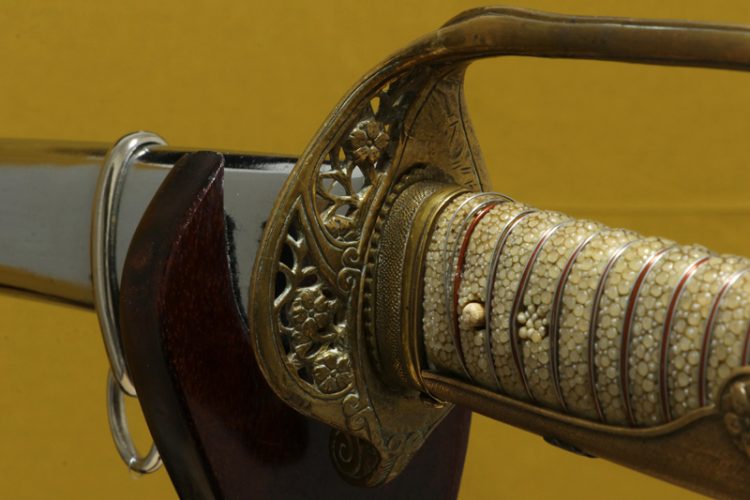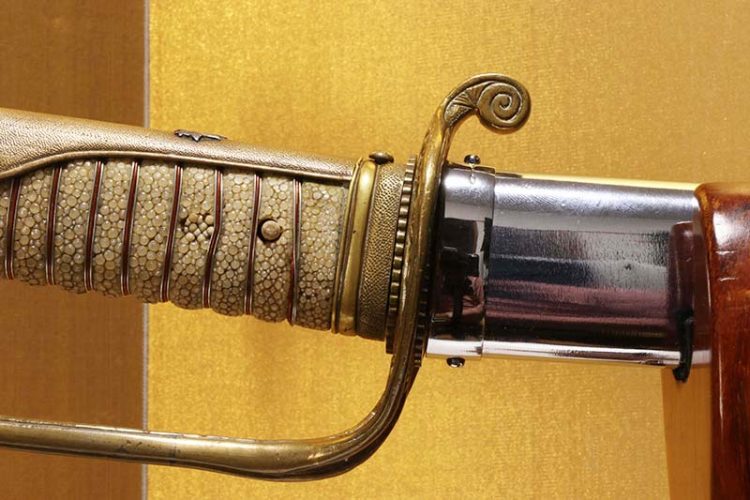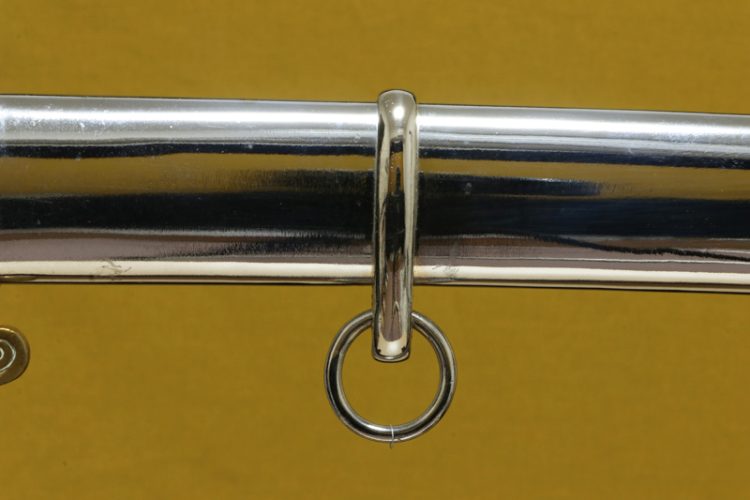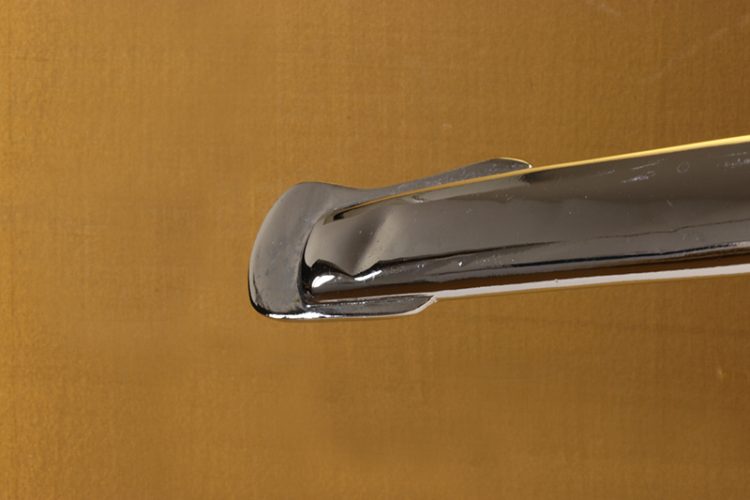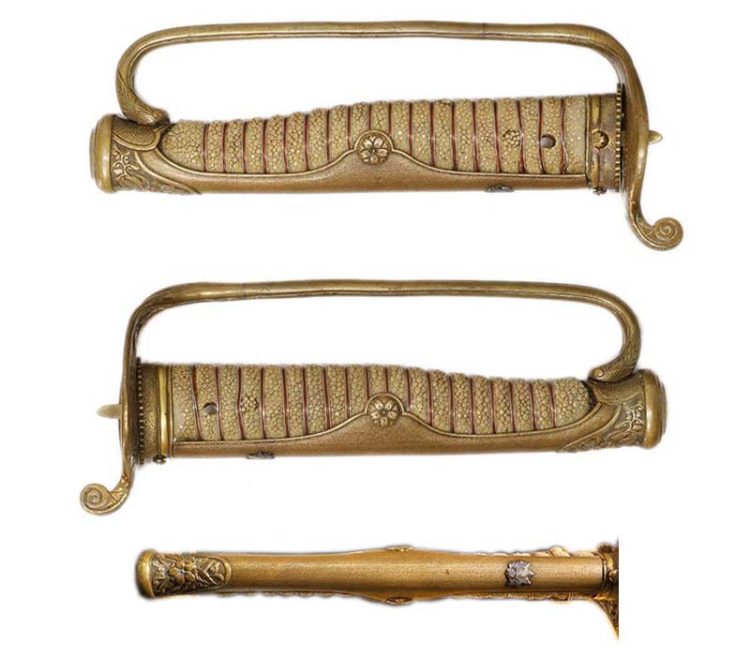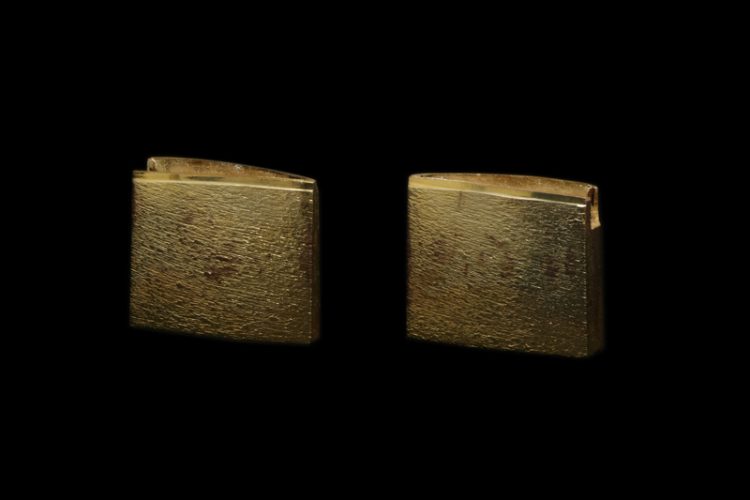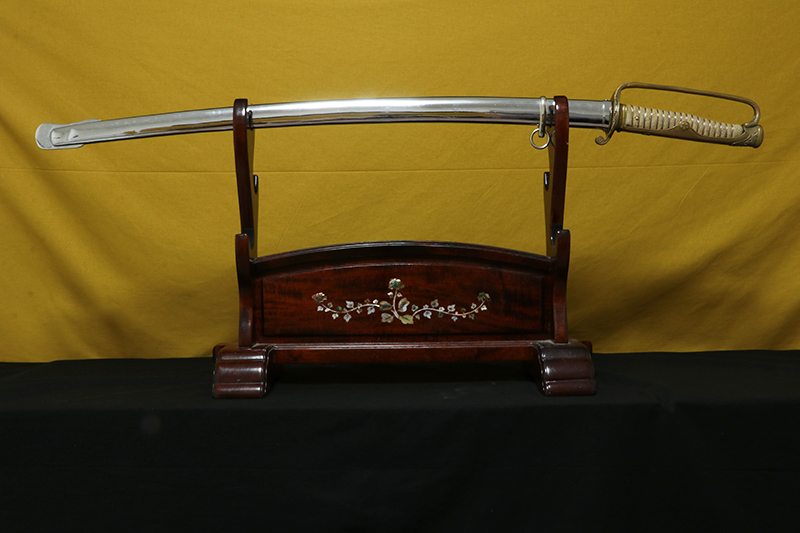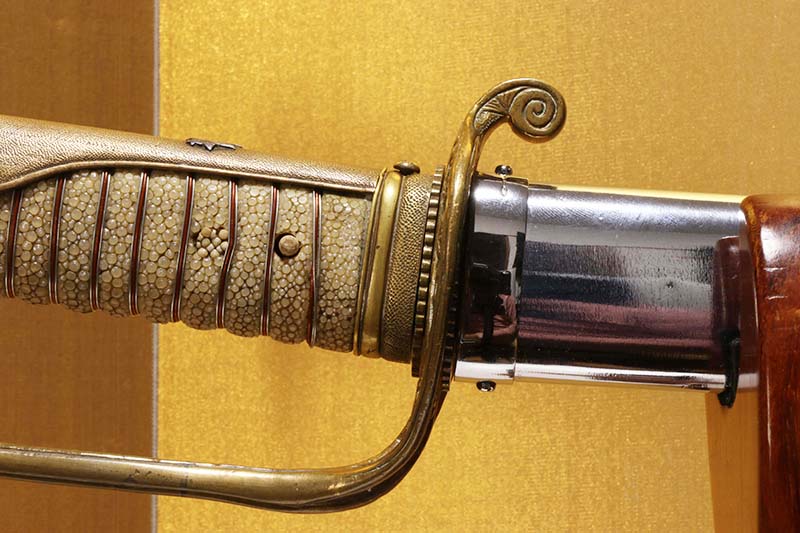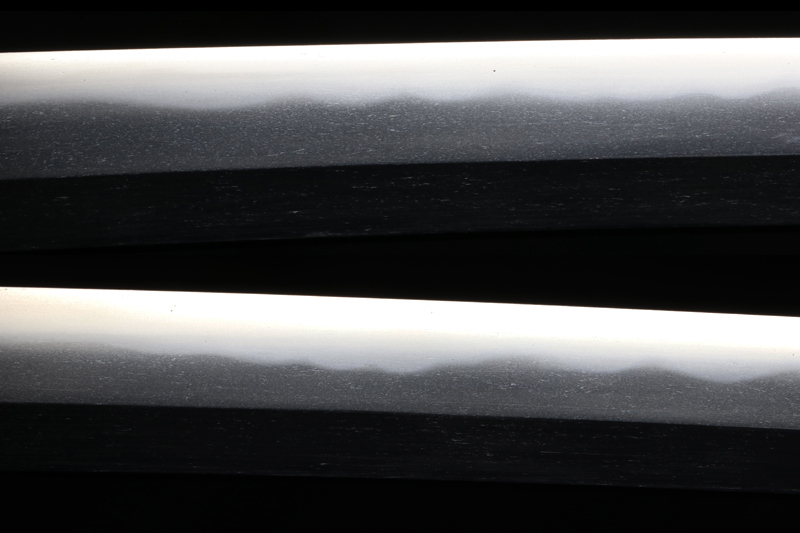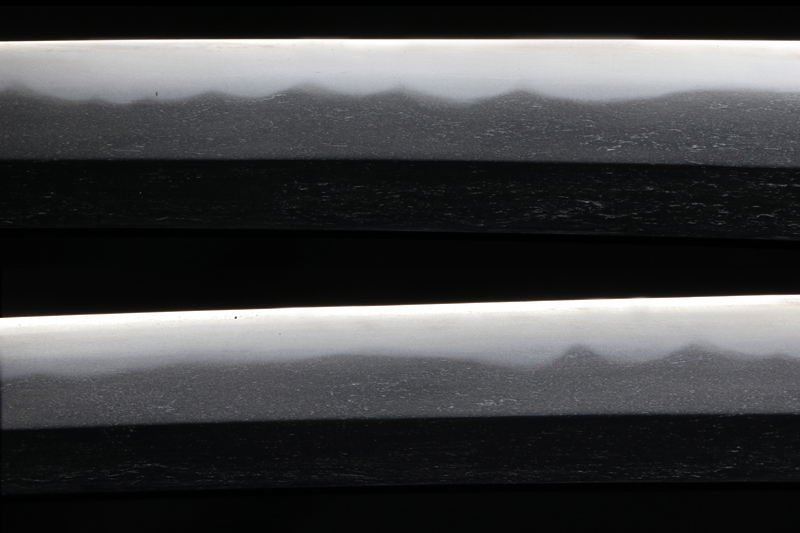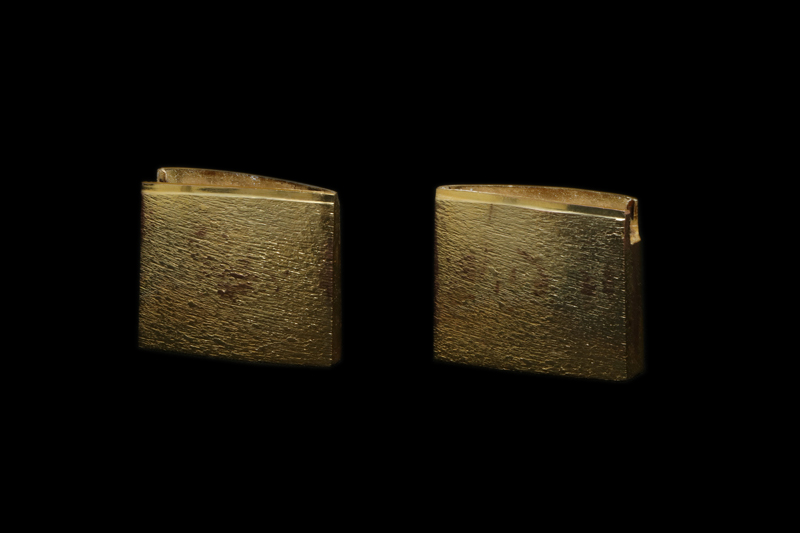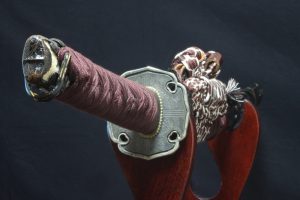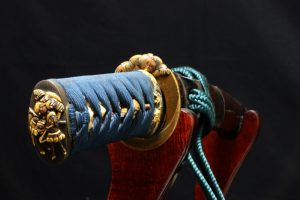説明
「刀姿 sword figure」
鎬造り庵棟、身幅重尋常、鳥居反り中鋒。茎は磨り揚げられ鑢目は切り、茎尻は一文字に切られる。
「地鉄 jigane」
地鉄は板目肌が流れ心となり、白気映りが入る。
「刃紋 hamon」
刃紋は互の目、刃縁沸が付き砂流しかかり、尖り刃を交える。釯子は乱れ込み小丸に返る。
「特徴 detailed」
無銘の古刀です、時代は室町時代後期で国は美濃、末関の刀を磨り揚げた物だと思います。
刀身の状態は概ね良好で、錆は有りません。
付属する軍刀拵は、日本陸軍尉官用両手握りサーベル拵で、明治時代後期から94式軍刀拵が採用されるまで使用された軍刀です。
状態は良く鞘の下の方に凹みが有りますが、これは装着時に物に当たった痕跡で、軍刀には良く有る凹みです。
鞘のクローム鍍金に剥がれや錆も無く、柄には家紋が入り、またコンディションが良いです。
日本陸軍尉官用両手握りサーベル拵は、コンディションの良い物は少なく貴重です。
This is a mumei (unsigned) old sword, likely from the late Muromachi period, attributed to the Mino–Sue Seki school and shortened from its original form.
The blade is generally in good condition with no rust present.
The accompanying military mounting is a Japanese Army officer’s two-handed saber koshirae, used from the late Meiji period until the adoption of the Type 94 guntō koshirae.
The condition is good overall. There is a dent near the lower part of the scabbard, which appears to be an impact mark from being worn—such dents are commonly seen on military swords.
The scabbard’s chrome plating shows no peeling or rust, and the hilt bears a family crest, remaining in very good condition.
Well-preserved examples of Japanese Army officer two-handed saber mountings are quite rare and highly valuable.
「拵 Koshirae」
日本陸軍尉官用両手握りサーベル拵。
ハバキ(habaki) :素銅地金色絵の縦鑢。
「刀剣の状態 condition of blade」
研:概ね良好です。
傷:欠点に成るような傷は有りません。
